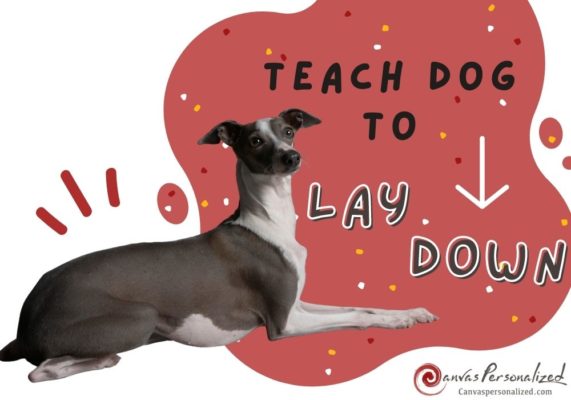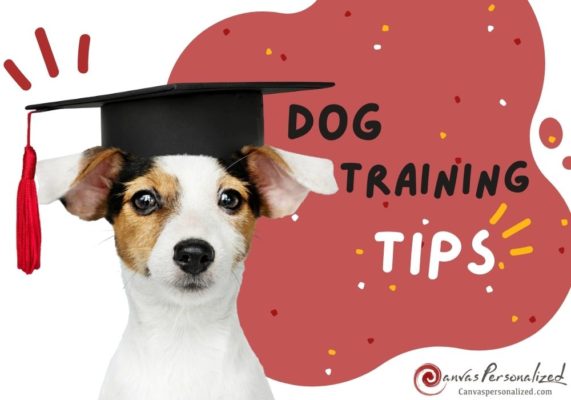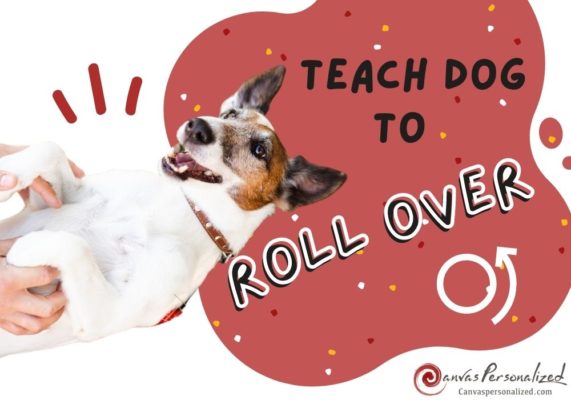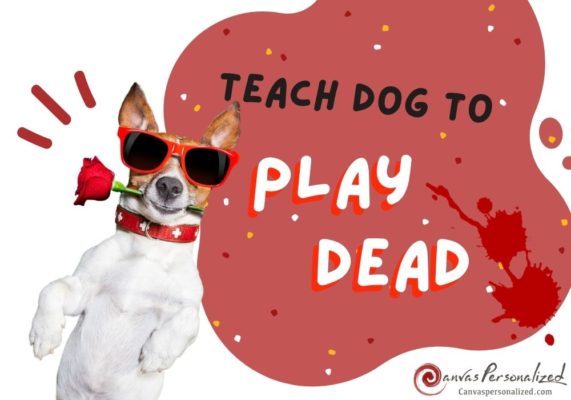There are many reasons why shaking hands is such a fundamental dog trick. It’s adorable, canine-friendly, and easy to train. So when new puppy parents teach a dog to shake hands or any other desired position, it will go a long way toward building their trust and obedience to owners. This guide from Canvas Personalized will walk you through step-by-step instructions and helpful tips to have your pup shaking paws like a pro in no time.
1. Train Your Dog to Shake Hands in 6 Steps
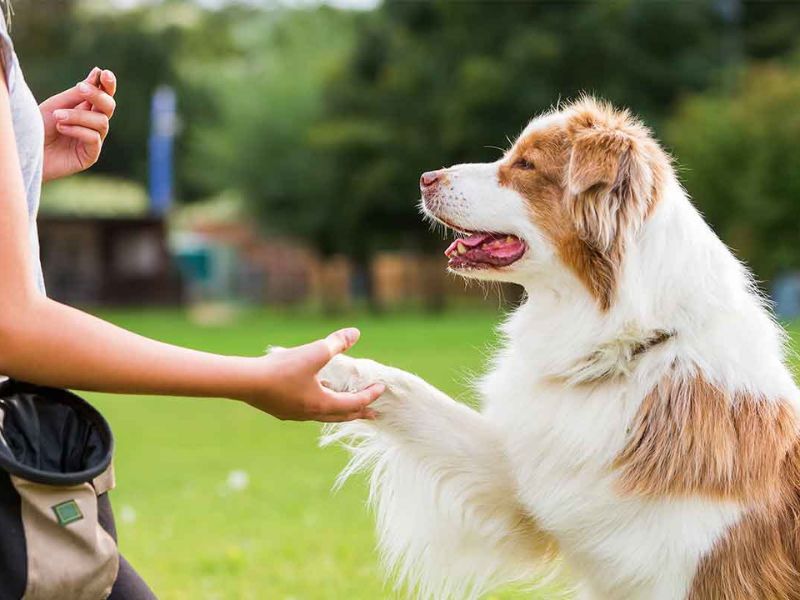
Preparation Before Training
Before you embark on your journey to become a handshake pro with your canine companion, a little preparation goes a long way! Think of it like building a solid foundation for a ‘pawsome’ trick. Here’s what you’ll need to set your dog (and yourself) up for success:
- Treats: Choose small, bite-sized treats that your dog finds highly rewarding. This could be bits of their kibble, chopped-up hot dogs, or small pieces of cheese.
- Location: Find a quiet, distraction-free area in your home or backyard where your dog won’t be interrupted by people, noises, or other animals.
- Cue: Pick a short, clear verbal command that you’ll use consistently throughout training. “Shake” is a commonly used cue, but you can choose any word you prefer.
6 Easy Steps To Teach a Dog to Shake Hands without a Clicker
Step 1: Start with a sit
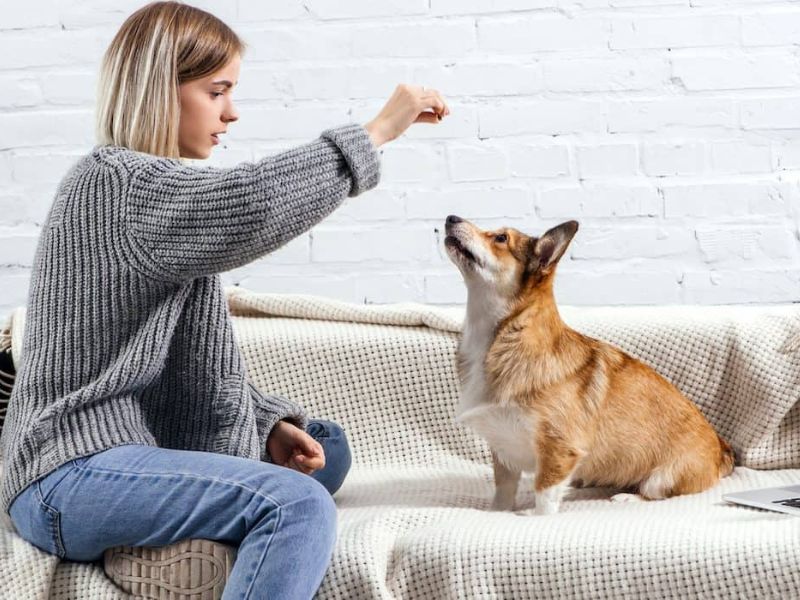
Before starting the shake training, ensure your dog knows the sit command. This provides a stable platform for them to offer a paw. If your dog doesn’t know how to sit, take some time to teach them this basic command first using treats and positive reinforcement.
Step 2: Hold a treat
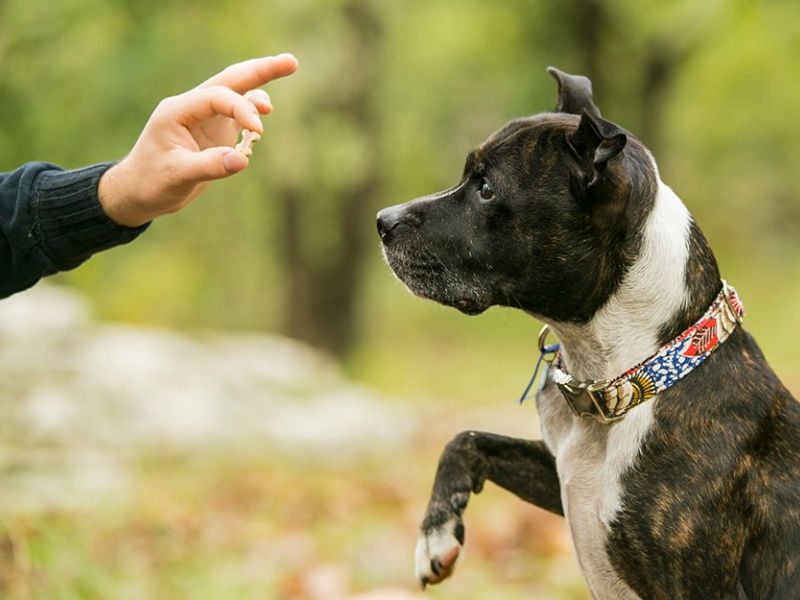
Close your hand around a single treat and hold it near your dog’s nose. The enticing smell of the treat will naturally motivate your dog to try and get it.
Your dog may sniff and lick at your closed hand to try and knock it open and access the treat. Patience is key here. Don’t open your hand or give the treat until your dog paws at your hand.
Step 3: Give the treat
When your dog’s paw makes any contact with your hand, even accidentally, open your hand to deliver the treat and praise your dog enthusiastically with pats and verbal compliments (e.g., “good boy”). This immediate reward reinforces the association between pawing your hand and getting a treat and praise.
*Pro tip: Do not try to grab your dog’s paw and raise them to your hand if they still do not get what you ask. Be patient and keep your hand closed until your dog understands how to give a paw.
Step 4: Increase the difficulty
Repeat steps 2 and 3 consistently during short training sessions.
When your dog consistently paws at your closed hand to seek the treat, wait for them to actually place their paw on your hand before giving any praise or reward. Gradually extend the amount of time your dog needs to keep their paw resting before receiving the reward. This teaches them the difference between a quick paw swipe and a held paw lift, which is the desired behavior.
Step 5: Add verbal command

Now that your dog consistently rests their paw on your hand, it’s time to add a verbal cue like “shake” or “paw.” But hold on! Introducing this cue too soon might confuse them and link it with just pawing, not holding. Wait until you’re confident your dog will keep their paw there. Then, say the cue (“shake!”) as you gently move your hand in a shaking motion. Gradually increase the shaking movement as your dog gets the hang of it.
Step 6: Phase out the treats

Once your dog masters the “shake” command, gradually decrease your reliance on treats. Have them perform the shake, but offer the treat from your other hand, surprising them and breaking the association between shaking and an immediate treat there. Give the treat fewer times during training sessions, eventually eliminating it completely. This way, your dog learns the joy of shaking hands without the constant lure of a treat.
*Pro tip: At any point, when your dog gets confused about what to do, you should go back and practice the previous step until moving on to the more difficult step.
2. How to Teach a Dog to Shake Hands with Each Paw

Unlike humans, dogs don’t automatically understand similar actions. Shaking with one paw might seem like shaking with the other to us, but for your dog, it’s a whole new trick! You’ll likely need to teach separately to train your dog to shake hands with both their right and left paw.
One approach is to focus on the paw closest to your hand. For example, if you use your right hand, aim for a shake with your dog’s left paw and vice versa. If your dog offers their paw on the “wrong” side, resist the urge to reward them. Only praise and treat them if they shake with the correct paw.
3. Common Training Problems and Troubleshooting Tips
3.1. Licking instead of shaking
This is a common issue, especially with puppies. They might be more interested in the taste of your treat-filled hand than the shaking motion itself. In this case, keep your hand closed around the treat until your dog offers a paw lift. The moment they lift their paw, even slightly, open your hand to deliver the treat and praise them. This reinforces the paw lift as the desired behavior.
3.2. Losing interest

Short attention spans are common in young dogs, and even older dogs might lose interest if the training session drags on or the treats aren’t exciting enough.
So, I highly recommend keeping an eye on your furry friend’s energy levels while training. If they seem frustrated or bored (yawning, pawing the ground, losing focus), it’s best to end the training session on a high note. Ask them to perform a simple command they know well, like “sit.” Ending with a successful task keeps your dog feeling confident and eager for more training in the next time.
In addition, mix up the types of treats you use to keep things interesting. Experiment with small pieces of cheese, kibble, or their favorite toy.
3.3. Confusion with the cue
If the verbal command (“shake” or “paw”) you’ve chosen is too similar to other commands your dog already knows (like “stay” or “paw off”), they might get mixed signals and struggle to understand what you want.
To solve this problem, choose a short, clear verbal command that’s distinct from other commands in your dog’s vocabulary. You should only say the cue the moment your dog lifts their paw. This helps them associate the sound with the desired action, creating a clear link between word and behavior.
4. Additional Training Tips
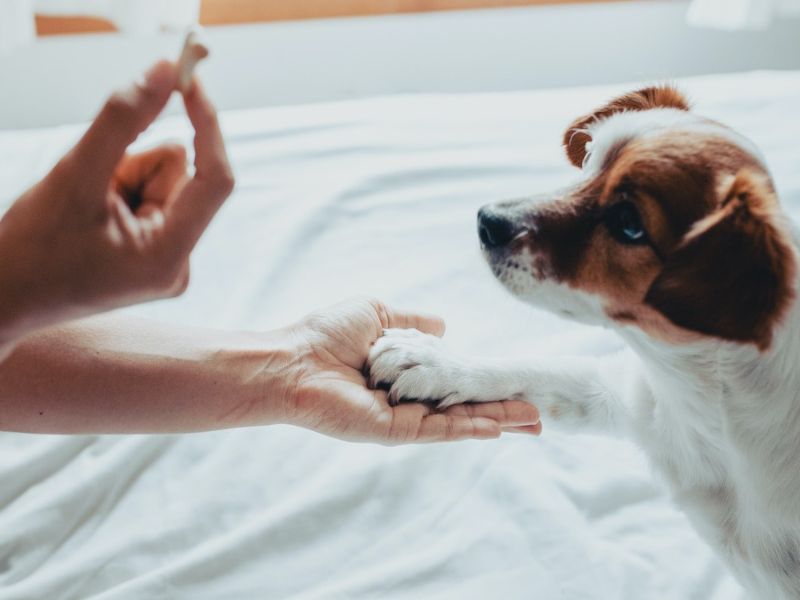
Shaking hands might seem like a simple trick, but don’t underestimate the power of good training! Especially for first-time dog owners, there can be unexpected hurdles along the way. As a dog trainer with years of experience, I’ve seen all sorts of furry personalities, and each pup learns at his or her own pace. To help smooth out your training journey, here are some tips I’ve gathered that can turn teaching your dog to shake into a fun and rewarding experience for both of you:
- Use a clicker: Clicker training can be helpful – click the button just before giving the treat to mark the desired behavior.
- Be patient and consistent: Dog training takes time and repetition. Celebrate small wins and use positive reinforcement to keep your dog motivated.
- Keep sessions short and fun: Aim for 5-10 minute training sessions several times a day. This keeps your dog engaged and prevents frustration.
- End on a positive note: Always finish your training session on a successful repetition to leave your dog wanting more and associating shaking with positive experiences.
- Acclimating to different hands: Once your dog has mastered shaking with your hand, try having them shake with other people’s hands to generalize the behavior. Introduce new people slowly and reward successful handshakes with praise and occasional treats.
>> Further reading:
- How To Teach A Dog To Come When Called In 4 Foolproof Steps
- How To Teach A Dog Its Name In 4 Foolproof Steps – New Tricks
- How To Quickly Teach A Dog To Roll Over On command In 3 Easy Parts?
- How To Teach A Dog To Smile: Easy Tricks In 6 Steps
Congratulations! You’ve successfully unlocked the secret handshake with your dog! Not only have you learned a fun trick together, but you’ve also strengthened your bond and communication skills. With consistent practice and these helpful tips, you can teach a dog to shake hands in no time! Looking for more ‘pawsome’ tricks? Explore our website, Canvas Personalized, for additional doggy training guides and fun activities to keep your furry friend entertained and engaged!



